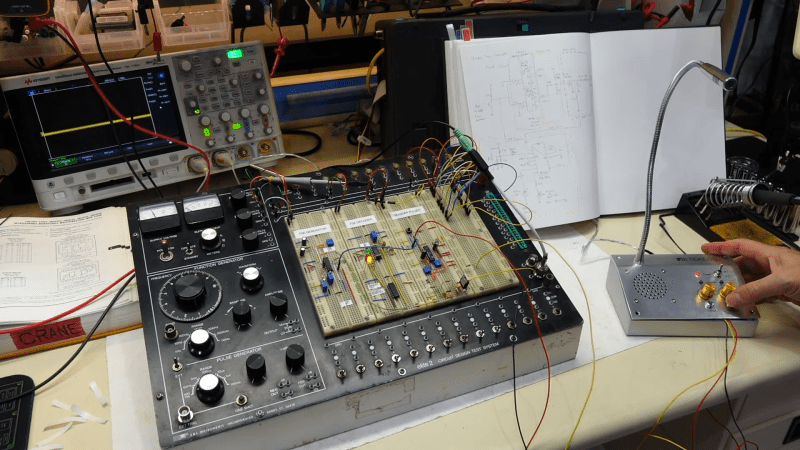
If there’s one thing that ties together all the media coming out of the Apollo era, it’s probably the iconic Quindar tones. These quarter-second beeps served as control tones for the globe-spanning communications network needed to talk to the Apollo astronauts, and any attempt to recreate the Apollo-era sound would be glaringly wrong without them. And that’s why [CuriousMarc] whipped up this Quindar tone system.
The video below starts with a detailed treatment of what Quindar tones are and why they were used, a topic we’ve covered ourselves in the past. To recap, Quindar tones are a form of in-band signaling, with a 2,525-Hz pure sine wave intro tone that signaled the transmitters connected to Mission Control in Houston over leased telephone lines to key up. The 2,475-Hz outro tone turned off the transmitters and connected the line to the receivers.
To recreate the sound quality of the original circuitry, and to keep in the retro vibe, [Marc]’s Quindar homage avoided digital circuitry as much as possible, opting instead to generate the two tones with an XR-2206 function generator chip. The chip can rapidly switch back and forth between two frequencies, making it perfect for FSK applications or, in this case, reproducing the two slightly different tones. [Marc] added a dual mono-stable multi-vibrator to pulse the tone, giving the 250-ms pulse, and an audio gate, which uses a MOSFET to switch the tone into an audio stream. All this got soldered up to a piece of perf board and stuffed in the base of a cheap intercom microphone, which while not period accurate still has a cool retro look — and now, a retro sound, too.
Hats off to [CuriousMarc] and his merry band for probing the mysteries of Apollo-era comms and keeping the accomplishments of all those engineers alive. The methods they used are still relevant after all these years, and there seems to be no end to what we can learn from them.
0 Commentaires